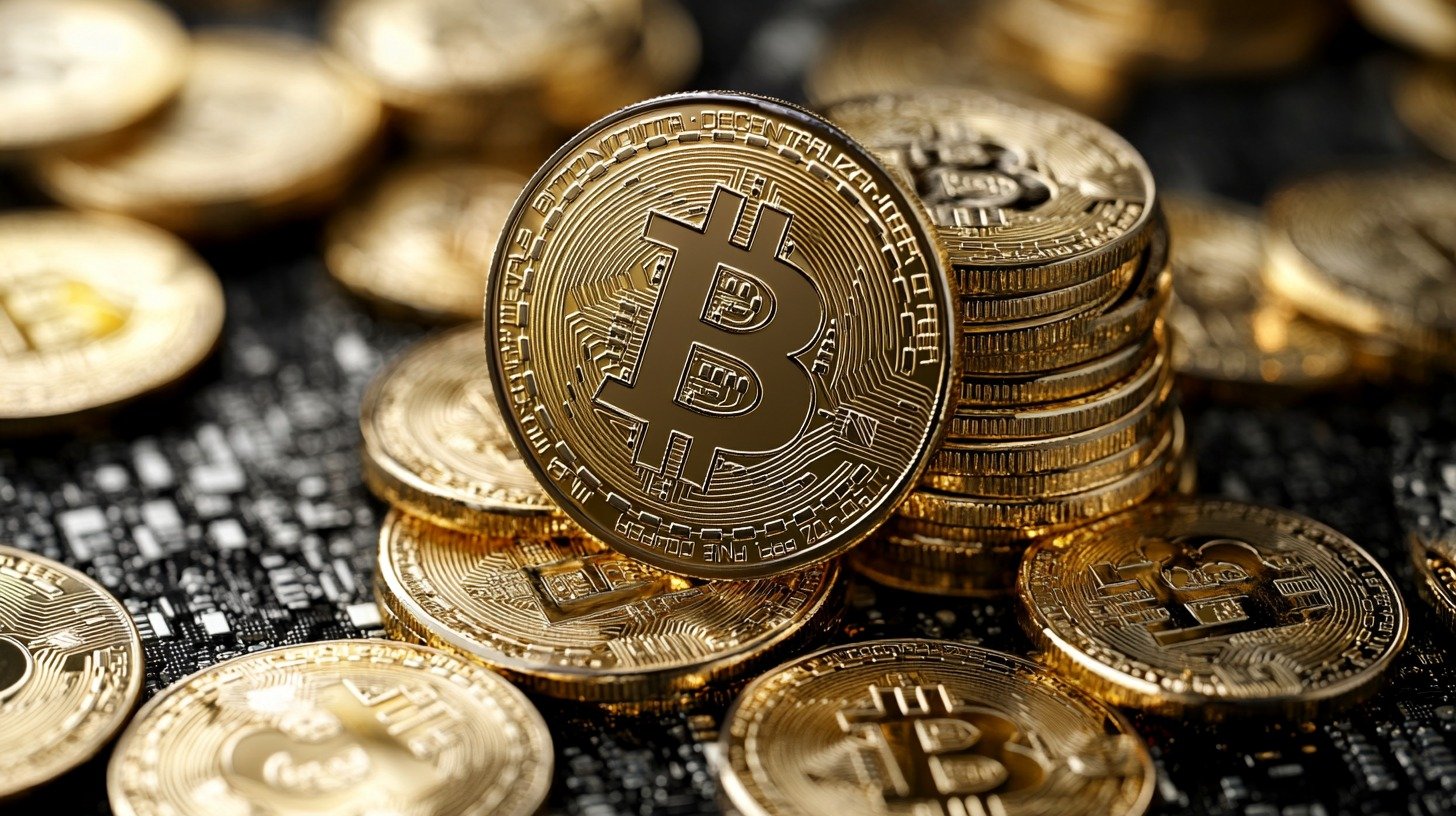Crypto & Finance
Japan is finally approving its first yen-backed stablecoin but what it could do to government bonds is shocking
With JPYC’s approval expected this fall, Japan’s stablecoin debut may not just challenge the dominance of USDC and USDT — it could trigger a seismic shift in demand for Japanese government bonds.

This marks the first time the Japanese government will greenlight a domestic fiat-pegged stablecoin, offering citizens and corporations a digital asset that maintains a 1:1 peg with the Japanese yen. The issuer, JPYC Inc., a Tokyo-based fintech firm, is on track to register as a money transfer business by the end of the month, according to a report from The Nihon Keizai Shimbun.
ALSO READ : Thailand’s bold crypto plan for tourists sparks global buzz but here’s why you still can’t buy Pad Thai with Bitcoin
Unlike volatile cryptocurrencies, JPYC will be backed by highly liquid reserves — including bank deposits and Japanese government bonds (JGBs) — providing both transparency and price stability. After purchase, tokens will be issued via bank transfer and stored in user-controlled digital wallets.
JPYC will likely start buying up Japanese government bonds in large quantities going forward,” said Okabe, a representative from the issuing company, in a recent post on
A digital yen that could reshape Japan’s bond market
While the launch of a yen-backed stablecoin is groundbreaking in itself, it’s the ripple effects that have economists and financial analysts buzzing.
In the United States, top stablecoin issuers such as Tether (USDT) and Circle have become major institutional holders of US Treasurys, which they use as collateral for circulating tokens. If JPYC follows a similar path, demand for JGBs could skyrocket.
And that’s not a small detail — Japan has the largest public debt among advanced economies, with over 1 quadrillion (that’s more than $7 trillion USD) in government bonds.
Okabe warned that nations delaying stablecoin adoption risk higher bond interest rates, missing out on new forms of institutional demand.
Stablecoins in Japan: From foreign dominance to local innovation
Until now, Japan’s stablecoin space was dominated by US dollar-based tokens like USDC and USDT. But that changed on March 26, 2025, when Circle officially launched USDC in Japan following its listing on SBI VC Trade, a licensed crypto exchange operated in partnership with SBI Holdings and Circle Japan KK.
The FSA had granted regulatory clearance for Circle’s USDC listing on March 4, marking the first time Japan approved a foreign-issued stablecoin under its new framework. At the time, Circle had announced plans to expand listings to major exchanges like Binance Japan, bitbank, and bitFlyer — platforms that draw over 1.85 million monthly visits each and handle $25M+ in daily volume.
Now, with JPYC’s domestic debut, Japan isn’t just catching up — it’s aiming to reclaim its monetary sovereignty in the digital age.
Why now? The timing is no coincidence
The global stablecoin market has exploded in 2025, growing to a market cap of $286 billion, driven primarily by demand for dollar-pegged tokens in cross-border settlements, DeFi ecosystems, and retail remittances.
As countries across Asia — from Singapore to South Korea — roll out their own stablecoin strategies, Japan was under increasing pressure to act. The approval of JPYC signals not only a domestic financial evolution but also a calculated move in global digital currency competition.
What to expect next
Once JPYC is fully approved and in circulation, observers expect a surge in stablecoin use cases across Japan’s e-commerce platforms, travel apps, and fintech ecosystems. If successful, it could open the floodgates for other yen-backed stablecoins and possibly central bank digital currency (CBDC) initiatives.
And perhaps more importantly, it could inject new energy into Japan’s bond market — one of the largest and slowest-moving in the world — by transforming government debt into the next big thing in digital finance.
Crypto & Finance
Metaplanet shocks markets with $600M Bitcoin buy becoming world’s 4th-largest corporate holder…
The Tokyo-listed firm now holds over 30,800 BTC worth $3.6 billion, surpassing rivals in the corporate Bitcoin treasury race.

In a move that cements its status as one of the most aggressive corporate buyers of cryptocurrency, Japanese investment company Metaplanet has acquired an additional 5,268 Bitcoin — a purchase worth nearly $600 million at current market prices.
The company’s announcement on Wednesday confirmed its total Bitcoin holdings now stand at 30,823 BTC, propelling the Tokyo-listed firm into the fourth spot among corporate Bitcoin holders, according to BitcoinTreasuries.NET. Metaplanet’s haul places it ahead of the Bitcoin Standard Treasury Company and behind only three giants: MicroStrategy, Marathon Digital, and Tesla.
ALSO READ : Taylor Swift credits George Michael on The Life of a Showgirl and some fans ask… Who is he?
The latest purchase was made at an average price of 17.39 million Japanese yen (approximately $116,000) per coin. In total, Metaplanet’s Bitcoin treasury is now worth $3.6 billion, with an average acquisition cost of about $108,000 per coin. According to data, the strategy has already generated an unrealized profit of 7.5%.
Metaplanet’s Bitcoin yield skyrocketed in 2024
Metaplanet began adding Bitcoin to its balance sheet in April 2024, and its pace of accumulation has stunned analysts.
By late 2024, the company’s BTC Yield — a metric tracking the ratio of total Bitcoin holdings to fully diluted shares — soared to 309.8%, meaning investors saw per-share Bitcoin exposure more than triple in a matter of months.
While that blistering pace has cooled, the metric remains steady at 33% in 2025, indicating the firm’s Bitcoin strategy continues, albeit at a more sustainable level.

“A 309% BTC Yield shows that Metaplanet’s accumulation speed far outpaced its share dilution,” one industry analyst noted. “Even with the stabilization, the company has positioned itself as a dominant crypto-treasury player.”
Public companies now hold 1 million Bitcoin
According to BitcoinTreasuries.NET, public companies collectively hold over 1 million BTC, worth approximately $116 billion — about 4.7% of the total circulating supply.
The broader landscape of treasuries is even more striking. Across ETFs, governments, exchanges, and private companies, 3.8 million BTC are held in treasuries worldwide, a stash worth around $442 billion.
Altcoin treasuries are also gaining momentum. Data from the Strategic ETH Reserve shows that Ether-based treasuries, including ETFs and reserve entities, now hold 12.14 million ETH, valued at $52 billion. Meanwhile, the Strategic SOL Reserve reports 20.92 million Solana (SOL) in treasuries, worth about $4.55 billion.
A bold bet on digital assets
Metaplanet’s aggressive strategy mirrors that of Michael Saylor’s MicroStrategy, which famously transformed itself into a Bitcoin treasury giant. With its latest acquisition, Metaplanet has not only sent a clear signal to Asian markets but also underscored the growing trend of corporations treating Bitcoin as a reserve asset rather than a speculative gamble.
For investors, the message is clear: while volatile, Bitcoin is no longer a fringe experiment. It is becoming a corporate asset class — and Metaplanet has just placed itself firmly in the global spotlight.
Crypto & Finance
US government shutdown sparks Bitcoin surge and analysts hint crypto market bottom may be near…
As Washington faces its first shutdown since 2018, Bitcoin climbs above $116,000 and experts say altcoins could already be at their lowest point.

The United States government entered its first shutdown in six years this week, and while political gridlock is rattling Washington, the cryptocurrency market may be finding its footing.
According to data shared by Cointelegraph, Bitcoin rose 2.9% in the past 24 hours, trading at $116,427 at the time of writing. Gold prices also jumped 0.7%, underscoring growing demand for so-called safe-haven assets amid economic uncertainty.
ALSO READ : Nicole Kidman files for divorce from Keith Urban after 19 years fans shocked by sudden split
The shutdown — the first since the record-breaking 35-day closure in late 2018 — stems from partisan divisions in Congress. Republicans pushed forward a temporary funding measure, or continuing resolution (CR), without adopting policy changes requested by Democrats. Led by Senator Chuck Schumer, Democrats insisted on including a permanent extension of Affordable Care Act tax credits to prevent millions from losing healthcare coverage.
Shutdowns and crypto: a mixed history
This latest closure has renewed debate over how shutdowns affect global markets. In 2013, equities fell while Bitcoin surged. But in 2019, both stocks and Bitcoin valuations declined. As macro research firm Milk Road Macro noted in an X post this week: “Shutdowns always disrupt the flow of government, but the market’s reaction is never uniform.”

For investors, the uncertainty often drives capital toward assets perceived as immune to political instability — a role that Bitcoin, and increasingly other cryptocurrencies, appear to be filling.
Analysts eye a crypto market bottom
Ryan Lee, chief analyst at crypto exchange Bitget, believes this shutdown could mark a turning point.
“Bitcoin is bound to also benefit from this shutdown, as its immunity to government and political uncertainties will make it attractive to mainstream traditional investors,” Lee told Cointelegraph. “While corrections are likely along the way, most promising altcoins in the market appear to have bottomed out.”
Lee added that Bitcoin reclaiming the $116,000 level is a “positive sign for the wider crypto market,” especially heading into October — historically one of the strongest months for digital assets.
Interest rates and investor sentiment
Beyond political theater, the market is also watching for a potential shift in US interest rate policy. Analysts suggest the shutdown could lead to reduced pressure on the Federal Reserve to raise rates further, which would favor both equities and crypto.
If the Fed slows down its tightening cycle, Bitcoin and altcoins could benefit from an influx of capital seeking growth opportunities outside traditional banking.
A fragile balance
Still, risks remain. Government shutdowns disrupt federal services, delay economic data releases, and inject volatility into already fragile markets. While Bitcoin’s rally may suggest optimism, analysts caution that sentiment can shift quickly, particularly if the shutdown drags on.
For now, the crypto community is eyeing October closely. If historical patterns hold, this month could set the tone for the rest of 2025, potentially turning a political standoff into an unlikely catalyst for the digital asset market.
Crypto & Finance
Bank of England chief says stablecoins could reshape UK banking system but warns of hidden risks…
Andrew Bailey signals openness to stablecoins for payments and settlements, while urging caution on their risks and impact on commercial banks.

The debate over stablecoins and their role in the future of finance has taken a sharp turn in the United Kingdom. Andrew Bailey, Governor of the Bank of England, has suggested that stablecoins could eventually reduce the country’s reliance on traditional commercial banks, opening the door for a system where money and credit are more clearly separated.
In a column for the Financial Times, Bailey acknowledged that the current system of fractional reserve banking—where banks keep a fraction of deposits in reserve and lend out the rest—creates inherent risks. “Most of the assets backing commercial bank money are not risk-free: they are loans to individuals and to companies,” Bailey wrote. “The system does not have to be organised like this.”
ALSO READ : Dutch firm Amdax raises $23M to chase 1% of Bitcoin supply what it means for global markets
Separating money from credit
Bailey floated the idea of a framework where stablecoins and banks could coexist, but with credit provision shifting more heavily to non-bank institutions. In his view, such a change could strengthen financial stability by separating money creation from lending activity.
Still, Bailey stressed the need for caution, warning that “it is important to consider the implications of such a change thoroughly before going ahead.”
Industry pushback over caps
Bailey’s comments come amid criticism of the BoE’s earlier proposal to impose caps on individual stablecoin holdings, a move industry groups said would be costly and burdensome.

Tom Duff Gordon, Vice President of International Policy at Coinbase, argued that “no other major jurisdiction has deemed it necessary to impose caps.” Advocacy groups warn that such restrictions could push innovation elsewhere, leaving the UK trailing behind markets in the European Union and the United States.
Bailey, however, clarified that his focus is on the mass adoption of stablecoins for payments and settlements rather than their speculative use as investment assets.
Central bank accounts for stablecoins?
In one of the most striking proposals, Bailey said that widely used UK-based stablecoins should be allowed to hold accounts at the Bank of England. Such access, he explained, would reinforce their credibility as money while ensuring that the system remains stable.
This approach appears to reflect a middle ground: while Bailey has previously warned against banks issuing their own stablecoins, central bank access could act as a safeguard against systemic risks while encouraging innovation in tokenized finance.
Risks still remain
Despite his measured optimism, Bailey emphasized that stablecoins are not without flaws. He noted that their backing assets must be truly risk-free, unlike the lending-heavy balance sheets of commercial banks. He also flagged the need for insurance against operational risks such as hacks, as well as standardized rules for exchange.
“It should also be possible to have innovation in the form of money,” Bailey said. “It would therefore be wrong to be against stablecoins.”
What this means for the UK
Bailey’s remarks mark a notable shift from earlier skepticism within the BoE. They also come at a time when governments worldwide are grappling with how to regulate stablecoins while maintaining financial stability.
The BoE is set to publish a consultation paper in the coming months on its systemic stablecoin regime, which will outline the rules for digital assets intended for use in everyday payments or for settling tokenized financial markets.
If implemented, Bailey’s vision could fundamentally reshape the UK’s financial landscape—offering innovation in payments while challenging the centuries-old dominance of commercial banks in money creation.
For now, the future of stablecoins in Britain hangs in the balance, with regulators, banks, and crypto firms all waiting to see whether the central bank will fully embrace this digital revolution or keep it on a tight leash.
-

 US News1 week ago
US News1 week ago“She Never Made It Out…” Albany House Fire Claims Woman’s Life as Family Pleads for Help to Bring Her Home
-

 Entertainment1 week ago
Entertainment1 week agoXG Star Cocona Shares a Brave Truth at 20 — “I Was Born Female, But That Label Never Represented Who I Truly Am…”
-

 Tech1 week ago
Tech1 week agoAfter Losing Over $70 Billion, Mark Zuckerberg Finally Admits His Biggest Bet Is “Not Working” – Meta Plans Massive Cuts to Metaverse Budget
-

 Entertainment1 week ago
Entertainment1 week agoSamba Schutte Reveals the Surprise Cameo in Pluribus That “Nobody Saw Coming”… and Why John Cena Was Perfect for the Role
-

 Entertainment6 days ago
Entertainment6 days ago“Heartbreaking… Devastating… Deaths”: ‘It—Welcome to Derry’ Creators Hint at a Finale Fans Aren’t Ready For
-

 Entertainment1 week ago
Entertainment1 week agoNika & Madison stuns global audiences as director Eva Thomas reveals why “resilience, not fear, drives Indigenous women on the run”
-

 Entertainment6 days ago
Entertainment6 days agoJudi Dench breaks silence on Harvey Weinstein and Kevin Spacey “I imagine he’s done his time…” — Hollywood stunned by her unexpected stand
-

 Entertainment1 week ago
Entertainment1 week agoMandy Moore Signs On for a Bold New Peacock Erotic Thriller — “A Twisted Game Where the Student Becomes the Teacher…”




























